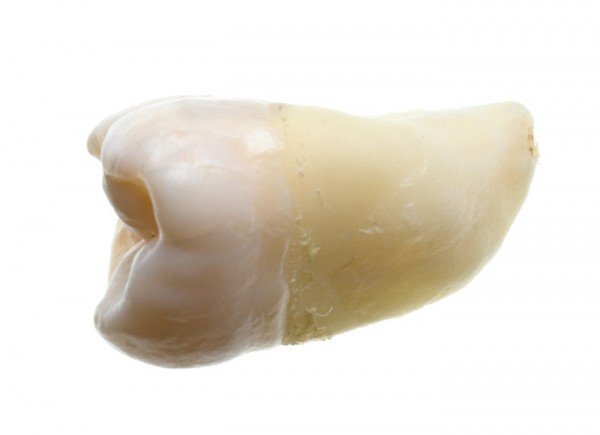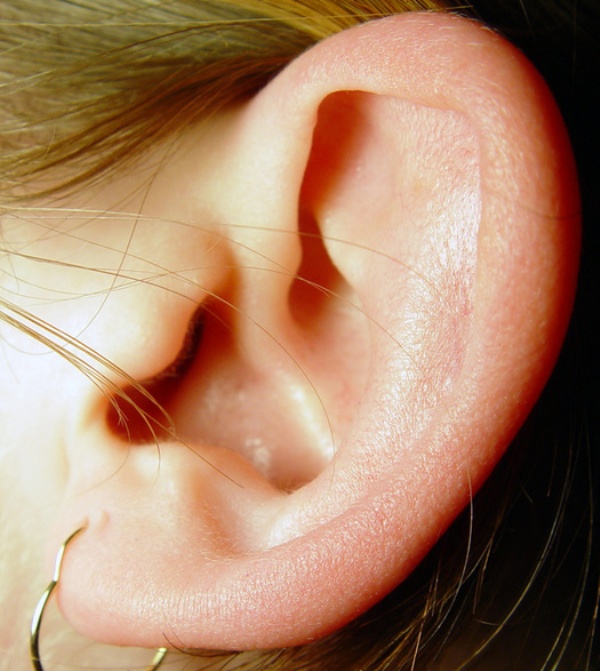5. Coccyx the Tailbone

Image Source
The coccyx , commonly referred to as the tailbone , is the final segment of the ape vertebral column. Comprises three to five separate or fused vertebrae (the coccygeal vertebrae) below the sacrum. In humans and other tailless primates (e.g. great apes) the coccyx is the remnant of a vestigial tail, but still not entirely useless; it is an important attachment for various muscles, tendons and ligaments — which makes it necessary for physicians and patients to pay special attention to these attachments when considering surgical removal of the coccyx. Additionally, it is also part of the weight-bearing tripod structure which act as a support for a sitting person. Nevertheless coccyx, or tailbone, is the remnant of a lost tail. All mammals have a tail at one point in their development; in humans, it is present for a period of 4 weeks, during stages 14 to 22 of human embryogenesis. This tail is most prominent in human embryos 31–35 days old.[7] The tailbone, located at the end of the spine, has lost its original function in assisting balance and mobility, though it still serves some secondary functions, such as being an attachment point for muscles, which explains why it has not degraded further.
4. Wisdom Teeth

Image Source
W isdom teeth are the four third molars , present in the upper and lower jaws. Wisdom teeth usually appear between the ages of 17 and 25. Most adults have four wisdom teeth, but it is possible to have more, in which case they are called supernumerary teeth. Wisdom teeth commonly affect other teeth as they develop, becoming impacted or “coming in sideways”. They are often extracted when this occurs. About 35% of the population does not develop wisdom teeth at all. Wisdom teeth are vestigial third molars that human ancestors used to help in grinding down plant tissue. The common postulation is that the skulls of human ancestors had larger jaws with more teeth, which were possibly used to help chew down foliage to compensate for a lack of ability to efficiently digest the cellulose that makes up a plant cell wall. As human diets changed, smaller jaws were selected by evolution, yet the third molars, or “wisdom teeth,” still commonly develop in human mouths.Currently, wisdom teeth have become useless and even harmful to the extent where surgical procedures are often done to remove them.
3. Outer Ear

Image Source
The ears of a Macaque monkey , and most other monkeys, have far more developed muscles than those of humans and therefore have the capability to move their ears to better hear potential threats. Humans and other primates such as the chimpanzee however have ear muscles that are minimally developed and non-functional, yet still large enough to be identifiable. A muscle attached to the ear that cannot move the ear, for whatever reason, can no longer be said to have any biological function. In humans there is variability in these muscles, such that some people are able to move their ears in various directions, and it has been said that it may be possible for others to gain such movement by repeated trials. In such primates the inability to move the ear is compensated mainly by the ability to turn the head on a horizontal plane, an ability which is not common to most monkeys—a function once provided by one structure is now replaced by another. The outer structure of the ear also shows some vestigial features, such as the node or point on the helix of the ear known as Darwin’s tubercle which is found in around 10% of the population. Darwin’s point, or tubercle, is a minor malformation found in a substantial minority of people and takes the form of a cartilaginous node or bump on the rim of their outer ear, which is thought to be the vestige of a joint that allowed the top part of the ancestral ear to swivel or flop down over the opening to the ear.
2. Male Nipples

Image Source
Men’s nipples, cited as vestigial structures, are in a sense vestigial and are analogous to vestigial structures such as the remnants of useless pelvic bones in whales but are not truly vestigial because they are not remnants of functional male nipples in ancestral species. They occur because nipple precursors are grown early in the development of the human embryo, before sexual differentiation. Later in life these structures become more fully developed in women. The presence of nipples in male mammals is a genetic architectural by-product of nipples in females. So, why do men have nipples? Because females do.
1. Palmar Grasp Reflex

Image Source
Not a structure but a vestigial behavior, the palmar grasp reflex appears at birth and persists until five or six months of age. When an object is placed in the infant’s hand and strokes their palm, the fingers will close and they will grasp it. The grip is strong but unpredictable; though it may be able to support the child’s weight, they may also release their grip suddenly and without warning. The reverse motion can be induced by stroking the back or side of the hand. The palmar grasp reflex is supported to be a vestigial behavior in human infants. When placing a finger or object to the palm of an infant, it will securely grasp it. This grasp is found to be rather strong. Some infants—37% according to a 1932 study—are able to support their own weight from a rod, although there is no way they can cling to their mother. The grasp is also evident in the feet too. When a baby is sitting down, its prehensile feet assume a curled-in posture, much like what is observed in an adult chimp.An ancestral primate would have had sufficient body hair to which an infant could cling unlike modern humans, thus allowing its mother to escape from danger, such as climbing up a tree in the presence of a predator without having to occupy her hands holding her baby.